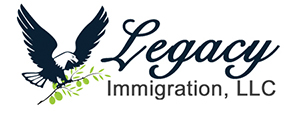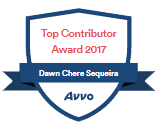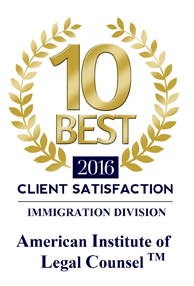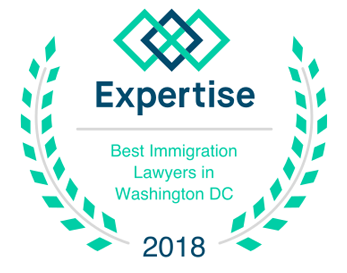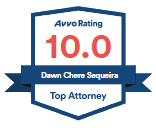H-1B Specialty Occupation
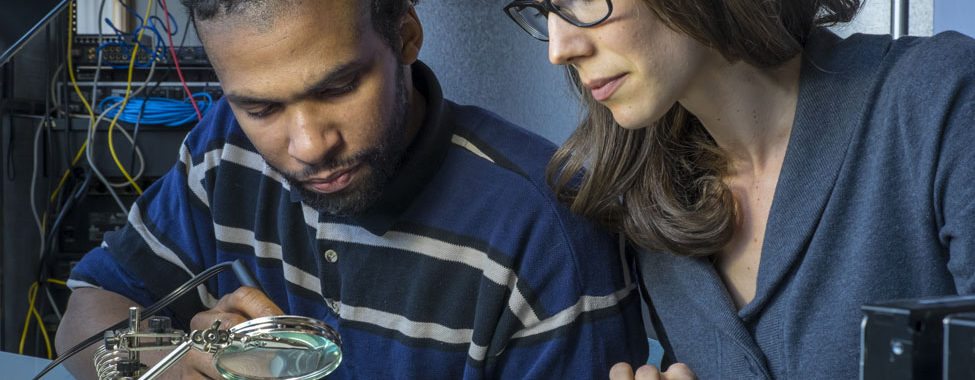
Apart from the L-1 visa, the H-1B appears to be the other highly sought after nonimmigrant status in the U.S. The H-1B is exclusively reservd for “professionals” and “specialists” employed by a U.S. petitioner.
Immigration Act of 1900 (IMMACT90) created the specialty occupation eligibility for H-1B visas. “Specialty occupation” requires: 1) theoretical and practical application of a body of highly specialized knowledge, and 2) attainment of a bachelor’s or higher degree in the specific specialty (or its equivalent) as a minimum for entry into the occupation in the United States.
“Professionals” are defined by the Immigration and Nationality Act (INA) §101(a)(32) to “include but not be limited to architects, engineers, lawyers, physicians, surgeons, and teachers in elementary or secondary schools, colleges, academies, or seminaries.”
“Specialists” are defined by the Immigration and Nationality Act (INA) §214(i)(2) with respect to a specialty occupation are: (A) full state licensure to practice in the occupation, if such licensure is required to practice in the occupation; (B) completion of the degree…for the occupation; (C)(i) experience in the specialty equivalent to the completion of such a degree, and (ii) recognition of expertise in the specialty through progressively responsible positions relating to the specialty.
The H-1B was initially known as the H-1 visa. The H-1 allowed many different types of foreign nationals to qualify for the visa including artists, athletes, businesspeople, entertainers, nurses, etc. Today, prominent foreign nationals who do not meet the requirements for a specialist use the “O” visa classification if they have “extraordinary ability”; athletes and performers use the “P” visa classification.
Frequently Asked Questions
Specialty occupation means an occupation which requires theoretical and practical application of a body of highly specialized knowledge in fields of human endeavor including, but not limited to, architecture, engineering, mathematics, physical sciences, social sciences, medicine and health, education, business specialties, accounting, law, theology, and the arts, and which requires the attainment of a bachelor’s degree or higher in a specific specialty, or its equivalent, as a minimum for entry into the occupation in the U.S.
Usually USCIS takes a 3-step approach. First, it must be determined whether the position the beneficiary will fill is a professional or specialist job. On January 26, 1990, H-1 regulations added the “industry-standard” criteria to prove that occupations are “professional,” as defined by: 1) a baccalaureate or higher degree or its equivalent is normally the minimum requirement for entry into the particular position; or 2) The degree requirement is common to the industry in parallel positions among similar organizations…
Alternatively, when determining whether a position is a specialist occupation, the regulations also allow an “employer standard” where an employer may show that: 1) its particular position is so complex or unique that it can be performed only by an individual with a degree; 2) the employer normally requires a degree or its equivalent for the position; or 3) the nature of the specific duties are so specialized and complex that knowledge required to perform the duties is usually associated with the attainment of a baccalaureate or higher degree.
USCIS often looks to the Occupational Outlook Handbook (OOH) to determine whether a position is a specialist or professional occupation. Unless the degree required for the position is obvious (e.g. lawyer or doctor), USCI Soften requires a detailed explanation of why the job requires a degree; this has been one topic in Requests for Evidence (which require information about the degrees held by those previously filing the position or similar positions with the petitioner).
Job duties that are complex may also show that a position is a specialist occupation. If a job’s duties are so complex that theory, knowledge, and skills normally gained by attainment of a baccalaureate or higher degree in certain occupational specialties are required, then the Service would conclude that the position is a profession. However, a standard of complexity of duties alone is insufficient to determine the professional nature of apposition. Jos of skilled workers often involve complex duties.
Second, USCIS will examine the beneficiary’s background and experience to determine whether he or she is a professional or specialist qualified for the position based on his or her education and/or work experience. Regulations do not require a degree for all positions and recognize that employers in the industry may accept work experience equivalent to a degree. USCIS’ may not always apply a universal interpretation of this in every situation. It is very important to understand the difference between having the applicant having a bachelor’s degree and the requirement of having a bachelor’s degree to enter the field. This is often a topic of USCIS’ Requests for Evidence (RFE). For example, professional acupuncturists are primary health care providers who diagnose and treat disease. For licensure, some states require high education or equivalent training, but not necessarily a bachelor’s degree. According to USCIS policy, whether an acupuncturist is a specialty occupation depends on the state law governing the practice of acupuncture.
Third, USCIS will examine the wages and working conditions offered to the beneficiary to ensure that they comply with Labor Condition Application certified by the U.S. Department of Labor.
There are 65,000 cap for new H-1B visas. In addition, the H-1B Visa Reform Act of 2004 also carved out a “cap exemption” for up to 20,000 visas per year for persons who have earned a master’s or higher degree from a U.S. institution of higher education. There are 1,400 visas available each year for Chilean citizens and 5,400 visas for citizens of Singapore these 6,800 visas are subtracted from the traditional H-1B cap of 65,000. If they are unused, they are added back into the H-1B cap at the end of the fiscal year.
Based on the trend over the last few years, it is anticipated that there will continue to be insufficient H-1B numbers to meet demand and will go into a lottery system.
<strong>FY 2016</strong>: April 7, 2015, USCIS announced that it had reached the congressionally mandated H-1B cap for fiscal year (FY) 2016. USCIS also received more than the limit of 20,000 H-1B petitions filed under the U.S. advanced degree exemption.
<strong>FY2015:</strong> April 7, 2015, USCIS announced that it received a sufficient number of H-1B petitions to reach the statutory cap for fiscal year (FY) 2015 and also received more than the limit of 20,000 H-1B petitions filed under the U. S. advanced degree exemption.
<strong>FY2014:</strong> April 8, 2015, USCIS announced that for the first time since 2008, it reached the statutory H-1B cap of 65,000 for fiscal year (FY) 2014 within the first week of the filing period. USCIS also received more than 20,000 H-1B petitions filed on behalf of persons exempt from the cap under the advanced degree exemption.
<strong>FY 2013:</strong> June 12, 2012, USCIS announced that it received a sufficient number of H-1B petitions to reach the statutory cap of 65,000 for fiscal year (FY) 2013.
<strong>FY2012</strong>: November 23, 2011, USCIS announced that it has received a sufficient number of H-1B petitions to reach the statutory cap of 65,000 for fiscal year (FY) 2012.
USCIS will use a computer-generated process, also known as the lottery, to randomly select the petitions needed to meet the caps of 65,000 visas for the general category and 20,000 for the advanced degree exemption.
USCIS will first randomly select petitions for the advanced degree exemption. All unselected advanced degree petitions will become part of the random selection process for the 65,000 general limit. The agency will reject and return filing fees for all unselected cap-subject petitions that are not duplicate filings.
Before running the lottery, USCIS will complete initial intake for all filings received during the filing period. USCIS will continue to accept and process petitions that are otherwise exempt from the cap. Petitions filed on behalf of current H-1B workers who have been counted previously against the cap, and who still retain their cap number, will also not be counted toward the congressionally mandated H-1B cap. USCIS will continue to accept and process petitions filed to:
- Extend the amount of time a current H-1B worker may remain in the United States;
- Change the terms of employment for current H-1B workers;
- Allow current H-1B workers to change employers; and
- Allow current H-1B workers to work concurrently in a second H-1B position. U.S. businesses use the H-1B program to employ foreign workers in occupations that require highly specialized knowledge in fields such as science, engineering and computer programming.
It is always a good idea to maintain an underlying, independent status (or depart the U.S.) in the event that you petition is not selected. Applications not selected by the lottery system, will have the petitions and filing fees returned. A foreign national in B-2, L-1, or another nonimmigrant status who applied for a change of status to H-1B when visa numbers are unavailable will be denied a change of status if his or her current status expires before October 1st of the new fiscal year. If enough numbers are available on October 1st, or if the petitioner wins the cap lottery, the petition may be granted before October 1st, requiring the foreign national to obtain a visa abroad and return to begin employment.
In the past USCIS policy has been that F-1 and J-1 via holders (and their dependents) admitted for “duration of status” who filed a timely application for change of status to H-1B before October 1st remained in status until USCIS adjudicated the change of status, even if the foreign national’s education or training program had ended. However, foreign nationals could not continue employment beyond the validity of the employment authorization document (EAD) issued to F-1 visa holders, or the DS-2019, is
sued to J-1 visa holders.
Foreign nationals employed by higher-education institutions and affiliates, government, and nonprofit research organizations are exempt from the quota system. For example, a non-profit clinic associated with a university hospital may employ a qualified foreign national with a cap exempt H-1B visa.
Also exempt are H-1B extensions, amendments, change of employer petitions, concurrent petitions (more explanation below) or previously approved petitions that were never used and have remaining time.
Can Multiple H-1B Petitions Be Filed on My Behalf?
Yes and no. Some employers in the past attempted to improve their chances of winning the cap lottery by filing multiple petitions for the same employee. This practice is prohibited. USCIS will deny or revoke all petitions filed by the petitioner for the same H-1B beneficiary if more than one filing is discovered. Moreover, the petitions will not be returned and there will not be any refund.
However, it is completely permissible to have different employers or even related employers (e.g. parent company and its subsidiary) file petitions on behalf of the same foreign national for different positions (although an RFE may be issued to prove legitimate business need).
There are quite a few benefits of being cap exempt. First, you do not have to wait until April 1st to have the employer file the petition. Second, if you are filing a change of employer petition, you may begin employment with the new petitioner once a receipt notice is issued (provided that the foreign national has not engaged in unauthorized employment). Third, you do not have to wait until October 1st to begin working. For cap-subject petitions, the start date cannot be sooner than October 1st of the fiscal year. This means that the beneficiary must maintain lawful presence through October 1st. In many cases, especially for those filing for a change of status from B to H-1B, there is an issue of maintaining lawful status through October 1st.
If you no longer wish to continue your employment with the non-profit, then you will need to apply for the H-1B cap. Timing is very important here so you do not end up without a visa number.
Yes. If you left your employment and departed from the U.S. for one year or more, you are not required to reapply under the quota system if the full six years have not been entirely used. Similarly, if you got approved and never used a single day of the H-1B status, you are not required to apply under the cap. In both of these cases, you have the choice to either use the old H-1B number or file for a new one.
A foreign national on H-1B status who departs the U.S. then re-enters on B status may begin working for the new employer upon receipt of the H-1B petition. In this case, the H-1B petition was still valid (at least 6 years left and it was not revoked), the foreign national was properly admitted, and did not begin working until after the H-1B petition was receipted. The foreign national does not need to be in H-1B status at the time of porting as long as he or she is in a period of authorized stay.
However, if the foreign national changes to another visa classification, such as E-2 or O-1, the new petition must be approved and a change of status granted before beginning employment for the new petitioner.
A foreign national in F-1 OPT status seeking to change to H-1B at the beginning of the next fiscal year (or in the 60-day grace period after his or her OPT status expires), whose H-1B is selected for processing and approved after the H-1B lottery, will be allowed to stay in the U.S. until the H-1B takes effect on October 1st.
Previously, USCIS did not allow work between the time that OPT expired and the start date for the H-1B petition. The “cap gap” provisions allow a foreign national to stay, but did not extend OPT when OPT expired before the H-1B petition took effect. USCIS regulations now allow foreign nationals to stay and to work until the H-1B takes effect, or until it is rejected, denied, or revoked. However, the student must present the H-1B receipt to the designated school official (DSO) for the SEVIS system to be updated. A denial of change of status renders the foreign national out of status and he or she begins accruing unlawful presence from the date of the final decision.
Yes. This happens most commonly when the beneficiary has fallen out of status (after all, one cannot “change status” if there is no status to change from).
Yes. A foreign national who holds a valid H-1B visa stamp and who has ported to a new employer upon issuance of a receipt notice may travel iternationally with the pre-existing visa stamp and the I-797 receipt notice for the new petition. The new I-797 receipt notice is not a substitute for a visa stamp. Without a valid visa stamp, an individual cannot be readmitted to the U.S. (except for Canadians with a valid I-94).
A foreign national who travels internationally while a new H-1B petition is pending should be reminded to check his or her I-94 upon readmission before leaving the inspection station to ensure that the new company’s name is noted on the new I-94, or he or she will be improperly admitted to work for the old company.
If you think about it, the visa stamp lists a previous employer. If you arrive at the port of entry, the CBP officer may simply ask “what is your purpose of entry” and you can respond “working on H-1B”. Although you have not said anything wrong, the officer will look at the visa stamp and will be under the impression that you are employed with the petitioner listed on the visa (unless you present the I-797). However, you know that if a site visit occurred, you would not be located at the former employer’s location. Also if the CBP officer were to ask you for proof of employment (letter, pay statements, etc.), you would not be able to provide them. For these reasons, in addition to the Department of Homeland Security and Department of State’s post-9/11 heightened concern, it is worth your time and effort to just obtain a new visa stamp even if you have a valid visa stamp from a previous employer.
You may work for either company as long as neither petition has been withdrawn.
No. A visa is only used to enter the U.S. You can remain in the U.S. with a visa that expired 10 years ago. All this means is that if/when you depart the U.S., you will need to obtain a new visa to re-enter the U.S. The document that controls unlawful presence is your I-94, which is now electronic.
Yes. Employment contractors may file H-1B petitions as long as they have a U.S. tax identification number and a valid “Employer-employee” relationship with the foreign nationals. The complications that they will encounter are usually fourfold: 1) contractors performing services either from home or from multiple locations; 2) increased site visits; 3) proving valid employer-employee relationship; and 4) “ability to pay” for the length of the H-1B term (especially when the contract is shorter than 3 years). Contractors must pay the foreign national the required wage even when the foreign national is on travel or between assignments.
It depends. An H-1B can be approved for up to three years and a three-year extension is commonly granted. In recent years, with third party contractors, USCIS has granted initial approvals or three year extensions only through the term of the third party contracts. Therefore, even if the beneficiary is permanently employed by the petitioner, if the petitioner submits a third party agreement that shows the beneficiary’s project will only last for one year, the approval may only be for one (1) year. Here are Legacy Immigration, we have made several arguments including long-standing history which have helped obtain three year approvals.
No, employees must be paid as W2s.
Yes. A beneficiary already in the U.S. in another valid status may apply to change status to H-1B on Form I-129. It is common for a student in F-1 status working on Optional Practical Training (OPT) to apply to change status to H-1B.
No, you can have the equivalent of a bachelor’s degree obtained through education and experience. However, you must have met all of the requirements before you apply. Therefore, if you are applying to be a physician, but do not have your medical license at the time of applying for your H-1B status, your petition may be denied.
Yes. H-1B employment can be part-time or full-time. There is no specific number of hours the foreign national must work, but the Labor Condition Application (LCA) must reflect the accurate number of employment hours.
Practically speaking, a foreign national employed on a part-time basis who is employed for only a few hours or at a low or modest salary may need to provide additional documentation that proves he or she will not work illegally for another employer.
Remember that if/when the foreign national moves from part-time to full-time or vice versa, the H-1B petition must be amended since this is considered a “material change in the terms of employment.”
There are 3 required filing fees and one optional filing fee associated with the H-1B petition. First is the basic filing fee for the I-129 form. Second is the special H-1B Data Collection and Filing Fee Exemption Supplement or “training fee” which varies by the size of the U.S. petitioner and must be paid for the first H-1B petition and the first extension. This fee is applied to fund training of U.S. workers and enforcement of the H-1B program. The regulations bar the beneficiary from paying the H-1B Data Collection and Filing Fee Exemption Supplement fee or reimbursing the employer. After the employer’s original petition and first extension, subsequent extensions do not require payment of the H-1B training fee (nor the amendment petitions that do not request extensions of stay).
The third fee is the fraud detection and prevention fee mandated by the H-1B Visa Reform Act of 2004. There is no exemption from this fee, but it is paid only once and not with any extension petitions.
The optional fee is for “premium processing” which offers 15 calendar-day processing for certain employment-based petitions. During the 15-day period, USCIS will issue a decision (approval or denial), a Notice of Intent to Deny (NOID), a Request for Evidence (RFE), or will open an investigation for fraud or misrepresentation. If a NOID or RFE is issued, the 15-calendar clock is stopped and restarted upon receipt of the response.
The Consolidated Appropriations Act, 2016 (Public Law 114-113), signed into law by President Obama on December 18, 2015, increases fees for certain H-1B and L-1 petitioners. These petitioners must submit an additional fee of $4,000 for certain H-1B petitions and $4,500 for certain L-1A and L-1B petitions postmarked on or after December 18, 2015.
The additional fees apply to petitioners who employ 50 or more employees in the United States, with more than 50 percent of those employees in H-1B or L (including L-1A and L-1B) nonimmigrant status. These petitioners must submit the additional fees with an H-1B or L-1 petition filed:
- Initially to grant status to a nonimmigrant described in subparagraph (H)(i)(b) or (L) of section 101(a)(15) of the Immigration and Nationality Act; or
- To obtain authorization for a nonimmigrant in such status to change employers.
This fee is in addition to the base processing fee, Fraud Prevention and Detection Fee, American Competitiveness and Workforce Improvement Act of 1998 fee (when required), as well as the premium processing fee, if applicable. Public Law 114-113 fees will remain effective through September 30, 2025.
Click here to download a USCIS’ Chart Summarizing Payment of Filing Fees.
An H-1B visa holder may be the beneficiary of more than one H-1B petition, allowing the foreign national to hold more than one job concurrently. For example, an H-1B engineer may be the beneficiary of a second petition to consult with an engineering company for ten hours per week. However, a foreign national cannot hold two different statutes simultaneously (have E-2 with one employer and H-1B with another employer).
An H-1B employee who is not subject to the cap with one employer will not be subject to the cap if he or she obtains part-time employment with another employer, even if a new H-1B filing by the other employer is subject to the cap. This might sound counter-intuitive but the reasoning is that you have “already been counted against” the cap when you obtained your first-employment with the non-profit petitioner. So as long as you have not stopped being employed with the cap-exempt employer, you will not be subject to the cap with a completely different employer.
One note on this point is when you actually stop working for the non-profit. At that point, you will be subject to the cap so you will need to time your resignation from the non-profit very carefully so your petition is not denied for not having a visa number available.
Maybe, but it is like splitting hairs. The ultimate question is whether the foreign national expected something in return. If he or she expected compensation, reward, or future benefit, then the volunteer work probably violates status. A foreign national cannot perform “work” which is viewed as a position that would normally be a paid position or if the foreign national believes that some form of compensation will follow. In these instances, USCIS would require proper employment authorization issued by that agency. Even volunteering for a trial period leading up to compensated employment is prohibited. An applicant for a change of status may not offer his or her services to a prospective employer, even on a volunteer basis. The employment is unauthorized as long as the alien derives any benefit from it.
An employer may not suggest to an alien that he or she should do a period of “volunteer” work while the employer is deciding whether or not to file a non-immigrant visa petition or a labor certification application. USCIS has indicated that an applicant for change in non-immigrant status could not offer his or her services to a prospective employer on a “volunteer” basis. USCIS has stated that: “if any type of benefit could accrue to the alien, though it may not be wages or fringe benefits, the services will be considered unauthorized employment.” Volunteer services for a prospective employer constitute unauthorized employment if the alien will ultimately derive some benefit from the work.
However, what if the beneficiary simply wants to help out of the “goodness” of his or her own heart? Many community-based and student based organizations offer opportunities for volunteering. As long as no compensation is involved, and the opportunity is officially advertised as a volunteer position, the foreign national may participate
No, foreign nationals must have a U.S. employer with a tax identification number file a petition to sponsor them for H-1B status. However, a corporation owner may have the firm file an H-1B petition for his or her employment even if the foreign national is the enterprise’s sole proprietor. For a start-up company, there may be “ability to pay” issues to overcome and whether the foreign national engaged in unauthorized employment when starting the business.
Yes, you can act as a passive investor in a business while you are on H-1B status. The practical problem, however, is that the interpretation of a “passive investor” is very narrow in this context. Foreign nationals (often inadvertently) become “active investors” for the purposes of immigration law without realizing that their limited role in the business runs afoul of this narrow interpretation. If this isn’t handled properly, and if you inadvertently become an “active investor,” it can impact your H1-B status, and your ability to adjust as a Permanent Resident.
Maybe, as long as the owner is not an employee. USCIS will look to see if a legitimate employer-employee relationship exists and is clearly delineated and defined. If the owner is the sole proprietor, manager and employee who cannot be fired by the petitioning company and there is no outside entity which can exercise control over him/her, then no employer-employee relationship exists. However, if the corporation is controlling his work there may be an employer employee relationship but the petition must be carefully prepared.
Yes. Unlike almost all other foreign nationals with pending immigrant or adjustment of status applications, an H-1B or L beneficiary can depart the U.S. and return in his or her nonimmigrant status without fear that USCIS will deem the adjustment application abandoned. There is no need to file for Advance Parole. However, Advance Parole may be appropriate in certain cases like where the adjustment applicant worked using the adjustment EAD for an employer who did not sponsor them for their H-1B visa.
It is more common than not that someone on H-1B status will apply to adjust status in the United States. The H-1B, like the L-1, are “dual intent” visas. Someone who has a pending or approved I-130 and wishes to enter the U.S. on a B-1 or B-2 visa must prove that he or she does not have “immigrant intent” at the time of securing the visa and again when arriving at the port of entry.
IMMACT90 carved out an exception for H-1B and L-1 visa holders from the statutory presumption of immigrant intent set forth in INA §214(b). So a person who has an immigrant visa petition (I-130 or I-140) pending or approved may still be admitted with an H-1B or L-1 visa. Of course, one can still be denied entry if Customs and Border Patrol (CBP) believes that the individual will not comply with the terms of the H-1B or L-1 visa.
First, see if you can extend your H-1B status by recapturing time spent outside of the U.S. Often, this can add a few extra months to your time in the U.S. Second, you can try to change status to either a TN, O-1 or J-1.
A foreign national who is about to be laid off may apply for a change of status (e.g. to B-1, B-2, F-1, H-4). If the foreign national locates a new job before USCIS takes action on the pending change of status application, the foreign national can use the portability rules and begin employment at the new job upon the filing of a new H-1B petition.
Beware of the “last action rule” where the last approval dictates the status granted. So if the B petition is approved after the H-1B, then the foreign national should be in B-2 status and H-1B employment would not be authorized. If the change of status is granted before the new H-1B, the portability option is terminated (since the foreign national is no longer in H-1B status).
If a company dismisses an H-1B beneficiary for any reason within the period of authorized H-1B status, the employer is required by law to offer the individual a transportation ticket (not cash) to the individual’s last place of residence abroad. If the individual chooses to leave the company, becomes permanent resident, changes status, or stays with the company until the end of the H-1B period, the company is not obligated to offer return transportation. This obligation does not apply to the foreign nationals’ dependents. However, at present, there is no direct enforcement procedure. In circumstances where an employer failed to provide transportation, the employee would have to seek recourse in local or state court.
Before being laid off, beneficiaries are often able to find H-1B petitioners willing to sponsor them. The problem arises when the beneficiary has accrued days/weeks/months of unlawful presence. In many instances, a beneficiary has found a new petitioner to file an H-1B petition, but not before falling out of status and accruing unlawful presence as a result of termination, layoff, or resignation. In these cases, the subsequently filed H-1B petition is usually approved, but the beneficiary is required to depart the U.S. to consular process.
At Legacy Immigration, we are aware of the regulations that allow us to make discretionary requests to USCIS to “forgive” the unlawful status. To qualify, we must prove: 1) the delay was due to extraordinary circumstances beyond the control of the applicant or petitioner; 2) that the delay is commensurate with the circumstances; 3) that the foreign national has not otherwise violated his or her nonimmigrant status; 4) that the foreign national remains a bona fide nonimmigrant; and 5) the foreign national is not the subject of deportation proceedings or removal proceedings. For one of our clients, we were able to obtain H-4 status for a beneficiary who had accrued fifteen (15) months of unlawful presence.
USCIS has not quantified a specific number of days subsequent to termination of prior H-1B employment before which an extension application must be filed in order to take advantage of the “extraordinary circumstances” request. Some of the service centers appear to have adopted an informal 30- to 60-day rule, which has resulted in approvals of many or most applications filed within 60 days of the foreign national’s last date of employment with the approved H-1B employer.
Yes. The most common reasons that an I-129 is revoked are either when: 1) the beneficiary makes statements that conflict with the record; or 2) the government comes across conflicting information that was not available at the time USCIS made the initial approval.
Certain employers are designated by law and regulation as “H-1B Dependent” or “willful violators.” An “H-1B Dependent Employer” is one who employs a large percentage of H-1B employees. A “willful violator” is an employer who has been found by the government to have misrepresented or withheld material facts in the five years prior to filing a Labor Condition Application. Both of these types of petitioners must meet special requirements before sponsoring additional H-1B beneficiaries. The additional requirements mainly involve LCA attestations, do not apply when the employer seeks only to hire “exempt” H-1B beneficiaries (e.g. highly paid or who have a Master’s Degree or higher).
The H-1B1 applies to workers from Chile and Singapore. As of January 1, 2004, by treaty, professionals who are citizens of Chile or Singapore may apply for the H-1B1 (a variant of the H-1B visa and similar to a hybrid between an H-1B and TN professional visa). To qualify, the individual must be a national of Chile or Singapore who is engaged in a specialty occupation requiring: 1) theoretical and practical application of a body of specialized knowledge; and 2) attainment of a post-secondary degree in the specialty requiring four or more years of study (or the equivalent of such a degree) as a minimum for entry into the profession.
There are a few benefits and drawbacks to having the H-1B1. The H-1B1 categories does not require the applicant to have a professional license before admission as long as the applicant obtains an appropriate license after admission. However, if an H-1B1 changes to H-1B, he or she will become subject to the regular H-1B cap. In addition, An H-1B1 will also become subject to the regular cap after five (5) years in H-1B1 status. H-1B1 workers do not get the benefit of “portability” and cannot have “dual intent.” The single-most reoccurring question is whether someone on H-1B1 status can apply to adjust status within the U.S. This is not to say that someone who has been on H-1B1 for 4 years cannot apply for permanent residence without first changing status to H-1B. It does mean that at the time of obtaining H-1B1 status, the beneficiary did not have dual intent.
How We Can Help
- Prepare H-1B Petitions Involving Third Party Agreements to Obtain Three Year Approvals
- Prepare H-1B Petitions that Are Consistent with a Future Labor Certification Application (PERM) and/or Priority Worker Preference Petition
- Implement Creative Strategies to Select the Appropriate Position as Determined by the Employer’s Job Description and Duties to Meet the Specialty Occupation Requirement
- Prepare a Petition Addressing or Responding to Requests for Evidence to Prove Specialty Occupation by Industry Standard, Employer Standard, and/or Complex Duties
- Verify Compliance with the Department of Labor’s wage requirements
- Conduct Review of U.S. Petitioner’s Finances Regarding “Ability to Pay” Requirement
- Work with Employer to Provide Necessary Supporting Documentation to Try and Avoid Issuance of a Request for Evidence
- Perform Due Diligence on Inadmissibility Issues (e.g. prior denials, assertion of fraud, etc.)
Contact Us
Please give us a call to discuss your case. In-person consultations are available Monday through Friday from 8:00 am to 8:00 pm and Saturdays from 8:00 am to 5:00 pm. Please call our office at 301-529-1912 , text us, submit a request for consultation form below.
Please be sure to provide a timeline of events along with details of your entire immigration history.
